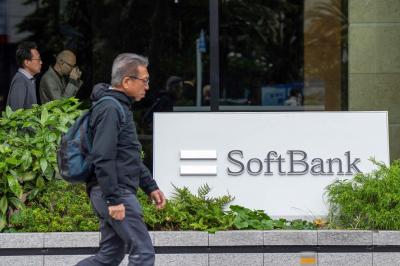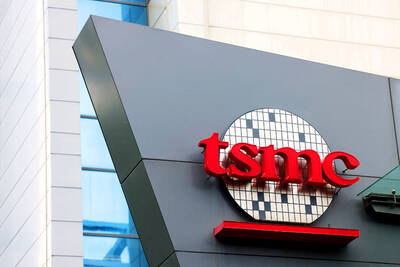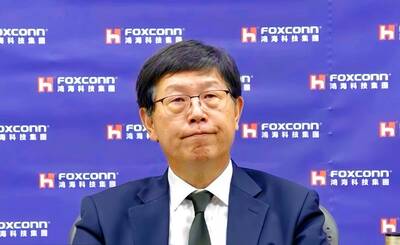Microsoft Corp's online advertising researchers will spend this year teaching computers to be smart about sticking ads into video clips, and to be even smarter about targeting ads to specific Web surfers.
Microsoft showed off a handful of early-stage advertising projects at its headquarters on Tuesday that may or may not turn up as part of Microsoft's Web advertising platform.
The demonstrations come just days after Microsoft's US$44.6 billion bid for Yahoo Inc, which, if successful, will boost the former's Web traffic and online ad revenue.
With its 2006 acquisition of aQuantive, the software maker gained a broader network of Web sites on which to sell ads, and tools to help marketers buy them.
A few of Microsoft's projects were aimed at helping advertisers get better at reaching their ideal customers online, particularly using search keywords.
The company showed a dashboard advertisers could use to forecast the success of certain keyword advertising campaigns and a system it says will make it easier for advertisers think about key ideas, rather than hundreds of individual keywords.
But most of the adCenter Labs prototypes had little to do with search.
"Search itself gets a lot of attention because of Google," said Tarek Najm, a technical fellow at Microsoft. "Advertising in search, as a result, gets a lot of attention."
Najm said spending on search keyword ads will be dwarfed by what marketers spend on other types of online advertising, such as placement based on "audience intelligence" -- figuring out what kind of person the Web user is based on their surfing and searching habits -- and display ads including video.
Microsoft -- along with Google Inc and other competitors -- is also hard at work on new ways for companies to advertise their brands to Web surfers watching video clips.
One crunched a clip, looking for the most appropriate stretch of time and spot on the screen for an advertiser's "bug," or logo.
For example, if a car company wanted to show its logo for 10 seconds in the bottom-right-hand corner of the screen, the computer program would then find the 10 seconds in which the logo interferes least with the action in the video.
Another used speech recognition to make a transcript of a video, then served up ads -- in the demonstration they were text links -- alongside the video. As the topics discussed on screen changed, so did the ads.
The third program scanned a video for surfaces where ads or product images could be inserted later.
The demo showed how the same frames could display a Coca-Cola ad one moment and a Pepsi ad the next without having to reshoot the video.
Other experiments included an interactive shopping kiosk that used elements of Microsoft Surface, a next-generation touch screen, to show ads and coupons, and a computer program that helped marketers avoid accidentally putting their brand on a Web page with distasteful content.

Japanese technology giant Softbank Group Corp said Tuesday it has sold its stake in Nvidia Corp, raising US$5.8 billion to pour into other investments. It also reported its profit nearly tripled in the first half of this fiscal year from a year earlier. Tokyo-based Softbank said it sold the stake in Silicon Vally-based Nvidia last month, a move that reflects its shift in focus to OpenAI, owner of the artificial intelligence (AI) chatbot ChatGPT. Softbank reported its profit in the April-to-September period soared to about 2.5 trillion yen (about US$13 billion). Its sales for the six month period rose 7.7 percent year-on-year

CRESTING WAVE: Companies are still buying in, but the shivers in the market could be the first signs that the AI wave has peaked and the collapse is upon the world Taiwan Semiconductor Manufacturing Co (TSMC, 台積電) yesterday reported a new monthly record of NT$367.47 billion (US$11.85 billion) in consolidated sales for last month thanks to global demand for artificial intelligence (AI) applications. Last month’s figure represented 16.9 percent annual growth, the slowest pace since February last year. On a monthly basis, sales rose 11 percent. Cumulative sales in the first 10 months of the year grew 33.8 percent year-on-year to NT$3.13 trillion, a record for the same period in the company’s history. However, the slowing growth in monthly sales last month highlights uncertainty over the sustainability of the AI boom even as

AI BOOST: Next year, the cloud and networking product business is expected to remain a key revenue pillar for the company, Hon Hai chairman Young Liu said Manufacturing giant Hon Hai Precision Industry Co (鴻海精密) yesterday posted its best third-quarter profit in the company’s history, backed by strong demand for artificial intelligence (AI) servers. Net profit expanded 17 percent annually to NT$57.67 billion (US$1.86 billion) from NT$44.36 billion, the company said. On a quarterly basis, net profit soared 30 percent from NT$44.36 billion, it said. Hon Hai, which is Apple Inc’s primary iPhone assembler and makes servers powered by Nvidia Corp’s AI accelerators, said earnings per share expanded to NT$4.15 from NT$3.55 a year earlier and NT$3.19 in the second quarter. Gross margin improved to 6.35 percent,

FAULTs BELOW: Asia is particularly susceptible to anything unfortunate happening to the AI industry, with tech companies hugely responsible for its market strength The sudden slump in Asia’s technology shares last week has jolted investors, serving as a stark reminder that the world-beating rally in artificial intelligence (AI) and semiconductor stocks might be nearing a short-term crest. The region’s sharpest decline since April — triggered by a tech-led sell-off on Wall Street — has refocused attention on cracks beneath the surface: the rally’s narrow breadth, heavy reliance on retail traders, and growing uncertainty around the timing of US Federal Reserve interest-rate cuts. Last week’s “sell-off is a reminder that Asia’s market structure is just more vulnerable,” Saxo Markets chief investment strategist Charu Chanana said in